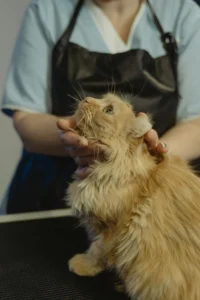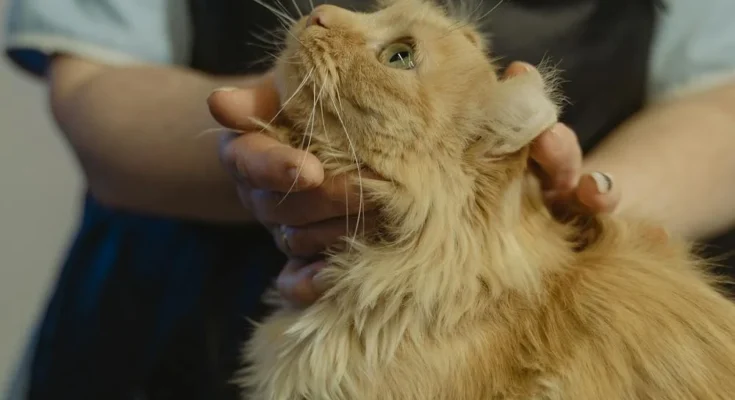
How to Keep Your Cat Happy and Healthy: 2024 Tips for a Purrfect Life
Introduction: The Key to a Purrfect Life
Owning a cat can be one of the most rewarding experiences, but it comes with a lot of responsibility. Keeping your cat happy and healthy isn’t just about feeding them; it’s about providing a balanced life that includes physical care, mental stimulation, and emotional well-being. A purrfect life for your cat means meeting their needs in every aspect, ensuring they live a fulfilling, long, and comfortable life.
Whether you’re a first-time cat owner or a seasoned pro, this guide will help you provide everything your feline friend needs to thrive in 2024.
Understanding Your Cat’s Needs
Before we dive into the specifics, it’s important to understand what your cat needs to stay happy and healthy.
Physical Needs: Food, Water, and Shelter
Just like humans, cats need proper nutrition, hydration, and a safe environment. Offering the right type of food, making sure they always have access to clean water, and ensuring their shelter is safe and clean are the basics that every cat needs to live well. Don’t underestimate the importance of these basics—a healthy cat starts with a well-maintained home and nutritious food.
Emotional Needs: Affection, Play, and Socialization
Cats, while independent, still need social interaction and affection. The emotional connection between you and your cat is key to their happiness. Playtime isn’t just about exercise—it’s about bonding with your cat. Even though they’re known for their independent nature, most cats love attention and will seek it out when they need it.
Choosing the Right Food for Your Cat
Choosing the right food for your cat is crucial to their health and happiness.
Wet vs Dry Food: What’s Best for Your Cat?
There’s an ongoing debate between wet and dry cat food, and the truth is—both have their pros and cons. Wet food is great for hydration because it contains a lot of water, but it can be more expensive. Dry food, on the other hand, is more affordable and can help with dental health, but some cats may not drink enough water if they’re only eating dry food. The best approach is often a combination of both, depending on your cat’s preferences and health needs.
How to Read Cat Food Labels Effectively
Understanding cat food labels is essential for making informed decisions. Look for high-quality protein sources like chicken, turkey, or fish listed as the first ingredient. Avoid food with too many fillers, like corn and soy, as they don’t provide much nutritional value for your cat.
Hydration: Ensuring Your Cat Gets Enough Water
Water is essential to your cat’s health, but many cats don’t drink enough.
Signs of Dehydration in Cats
Dehydration can lead to serious health issues in cats. Some common signs of dehydration include lethargy, sunken eyes, and dry gums. Always keep an eye on your cat’s water intake, especially if they seem to be avoiding their bowl.
How to Encourage Your Cat to Drink More Water
To encourage your cat to drink more, try placing several water bowls around the house or investing in a cat water fountain—many cats prefer running water, and it can help entice them to drink more often.
Keeping Your Cat Active
Keeping your cat physically active is essential for their health and happiness.
The Importance of Playtime
Playtime isn’t just for kittens—adult cats need it too! Interactive toys, like feather wands and laser pointers, are great for engaging your cat and providing both physical and mental exercise.
How to Keep Your Indoor Cat Active
For indoor cats, it’s especially important to provide plenty of stimulation. Cat trees, tunnels, and climbing shelves are excellent ways to help your cat stay active and entertained indoors.
Mental Stimulation: Keeping Your Cat’s Mind Sharp
Cats need mental stimulation to prevent boredom and stress.
Puzzle Toys and Interactive Games
Puzzle toys that hide treats or require problem-solving are a great way to engage your cat’s brain. Interactive games like teaching your cat to fetch or use a clicker for training can also help keep them sharp.
Training Your Cat: It’s Never Too Late to Teach New Tricks!
Training isn’t just for dogs—cats can learn new tricks too! Whether it’s teaching them to sit or to use the litter box correctly, a little bit of training goes a long way in making your cat feel accomplished and engaged.
Grooming Your Cat for Health and Happiness
Grooming is another essential part of your cat’s care.
Brushing and Bathing Your Cat
Regular brushing can help prevent mats and hairballs, and it’s a great bonding activity. Some cats enjoy baths, but others may not. Grooming regularly helps maintain healthy skin and a shiny coat.
Nail Clipping and Ear Cleaning Tips
Clipping your cat’s nails is important to prevent scratching and discomfort. Regularly clean their ears to avoid infections, especially if your cat has long, fluffy ears.
Creating a Safe and Stimulating Environment
Your home should be a safe and stimulating place for your cat to explore.
Setting Up the Perfect Cat Space
Designating a space for your cat, complete with cozy beds and stimulating toys, will make them feel at home. Make sure they have places to retreat to when they want privacy—cats love having their own space.
Using Cat Trees and Scratching Posts
Cat trees and scratching posts are not just for fun—they’re necessary for your cat’s physical and emotional well-being. They help keep your cat’s claws healthy and provide an outlet for their natural scratching instinct.
Veterinary Care: Regular Check-ups and Preventive Health
Regular vet visits are essential to keep your cat healthy.
Importance of Annual Vet Visits
Taking your cat to the vet once a year for a check-up is a must. Regular visits help catch health issues early and keep your cat up-to-date on their vaccinations.
Vaccinations, Flea Prevention, and Parasite Control
Vaccinations and preventive treatments are key to protecting your cat from diseases and parasites. Flea control is especially important to keep your cat comfortable and free from pests.
Dealing with Common Cat Health Issues
While cats are generally healthy, there are some common health issues to watch out for.
Identifying and Managing Hairballs
Hairballs are a common problem for cats, especially those with long fur. Regular grooming can help reduce the amount of hair your cat ingests, preventing hairballs.
Recognizing Symptoms of Cat Allergies
Cats can suffer from allergies, too. If your cat is scratching excessively or has runny eyes, it may be due to allergies. A visit to the vet can help determine the cause and provide relief.
Understanding Your Cat’s Behavior
Why Do Cats Meow? Understanding Communication
Cats communicate with us in various ways, and meowing is one of their most common methods. They may be asking for food, attention, or simply letting you know they’re around.
Body Language: What Your Cat is Telling You
Your cat’s body language says a lot. Pay attention to their tail, ears, and posture—these signals can tell you if they’re feeling playful, threatened, or relaxed.
Maintaining a Strong Bond with Your Cat
The bond between you and your cat is built on trust, affection, and interaction.
Spending Quality Time Together
Set aside time each day to spend with your cat. Whether it’s playtime, cuddling, or just sitting together, your cat will appreciate the attention and feel loved.
The Power of Petting and Cuddling
Petting your cat not only shows affection but also has health benefits for both of you. It can reduce stress and foster a deeper connection between you and your feline friend.
Traveling with Your Cat: Tips for a Stress-Free Journey
If you need to travel with your cat, make sure you’re well-prepared.
Preparing for the Journey
Use a comfortable carrier and keep your cat’s environment as calm as possible. Familiar items, like their favorite blanket, can help ease their anxiety.
Keeping Your Cat Calm While Traveling
Make sure your cat is safely secured in their carrier. If your cat gets anxious during travel, try calming sprays or calming collars to help them relax.
How to Manage Your Cat’s Aging Years
As your cat grows older, they’ll need extra care.
Caring for Older Cats
Older cats may have more specific health needs, such as joint care or dietary adjustments. Provide them with soft bedding and easy access to food and water.
Signs of Aging in Cats and How to Help
Look for signs like decreased activity or difficulty jumping. If your older cat seems to be in discomfort, consult your vet to make their later years more comfortable.
Conclusion: Your Cat’s Purrfect Life
By following these tips, you’re setting your cat up for a long, healthy, and happy life. Consistency is key—regular attention to their needs will keep them feeling purrfect. Remember, a happy cat means a happy home, so make sure you give them the love and care they deserve!
FAQs
- What’s the best food for a senior cat?
- For senior cats, look for food formulated for older cats with fewer calories and joint support.
- How do I keep my indoor cat entertained?
- Use interactive toys, scratching posts, and create a stimulating environment to keep your indoor cat active.
- How can I tell if my cat is stressed?
- Signs of stress include excessive grooming, changes in behavior, or hiding.
- How often should I take my cat to the vet?
- Take your cat to the vet at least once a year for a check-up and vaccinations.
- How do I help my cat lose weight?
- Consult your vet for a weight management plan, including portion control and increased activity.
